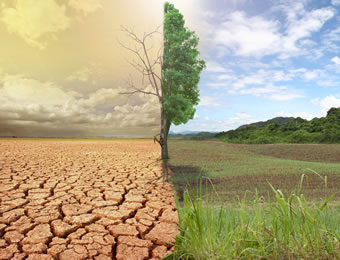Resource consumption in the process of growth and economic development can impact negatively on the ecological integrity of the environment as earlier stated above. This implies that we should ask the following questions as part of the sustainability checklist in day to day economic activities as highlighted below: What are the raw materials used for the products? Are there any toxic or hazardous chemicals likely to be generated during manufacturing? What performance regulatory specifications must the new product(s) and or service(s) meet? How reliable will the delivery manufacturing/distribution process be? Are all steps commercially proven? Does the company have experience with the operations required? What types of wastes are likely to be generated? What is their physical and chemical form? Are they hazardous?
This is the reason why the concept of design for environment (DFE) is now being advocated globally in order to reduce the negative impacts or carbon footprints, emissions and waste generation. This involves consumption of less energy, reduced waste generation, no hazardous materials/ non-toxic materials and sustainable forestry products. DFE is an umbrella term describing techniques used to build environmental component into products. The tools involved are techniques that are used for life-cycle assessment The most common DFE practices used include: design for recycling; design for disassembly, design for energy efficiency, design for disposability and hazardous material minimisation.
A number of challenges have been identified by the Institute for sustainable development as highlighted below: Price: There is a perception that green products are more expensive. This is true in some cases, particularly where development costs are reflected in prices, often there is no significant difference. Sometimes, a green product may have a higher up-front purchase price, for example, a non-toxic alternative to a toxic product will cost less to transport, store, handle and discard. Two, lack of corporate commitment: For an organisation to implement a green procurement it must have the commitment from all levels, including senior management and purchasing agents, a policy statement outlining the corporate commitment to green procurement can help in this regard. Third is insufficient knowledge: Many organisations are unfamiliar with the concept of green procurement or with the options available to them. For an organisation to participate, it must have an understanding of concepts, vocabulary and terms.
Fourth, there is the issue of availability. Frequently, local distributors do not stock green products. This can lead to delays in obtaining the product. Increasing market demand can overcome this obstacle. Fifth, there is no acceptable alternative. Another barrier to green purchasing can be simply the lack of acceptable alternatives to the present product. Sixth, no specifications: it is important that suppliers be asked to provide the environmental parameters of the products they are offering purchasers. In the same way, must clearly define their needs and requirements. Seventh is purchasing habits: We have always done it this way can be a difficult mentality to overcome. There may also be existing relationships between purchasers and suppliers that make it difficult to switch to alternatives. The steps involved in implementing a green procurement programme include organisation support. Implementing a green procurement programme means changing policies and procedures. For it to be successful, it is essential that management gives full support for the initiatives. In addition, those charged with making procurement decisions must be involved in the process. Their suggestions and support are critical success factors. Next is self-evaluation. An important step in implementing green procurement is an evaluation of present purchasing practices. This process will help to clarify what is purchased where and at what price.
Some developed countries have initiated programs and policies aimed at achieving sustainability through green procurement. Some of their policy initiatives focus on waste prevention techniques better known as 4RS: reduction, reuse, recycling, recovery. In Nigeria, efforts are being made through the relevant environmental agencies for policy advocacy and sensitisation for green development. In fact, a unique example of green projects in Nigeria is the Osun State Secretariat Complex, Osogbo which in concept, design and execution is fully branded as such with the green roof to depict the concept as a green project. In conclusion, it is obvious that green procurement is the new growth frontier according to the International Green Purchasing Network (IGPN) and it remains a major avenue for the achievement of sustainable development.
- Fatoberu is the Acting General Manager of the Osun State Public Procurement Agency.




